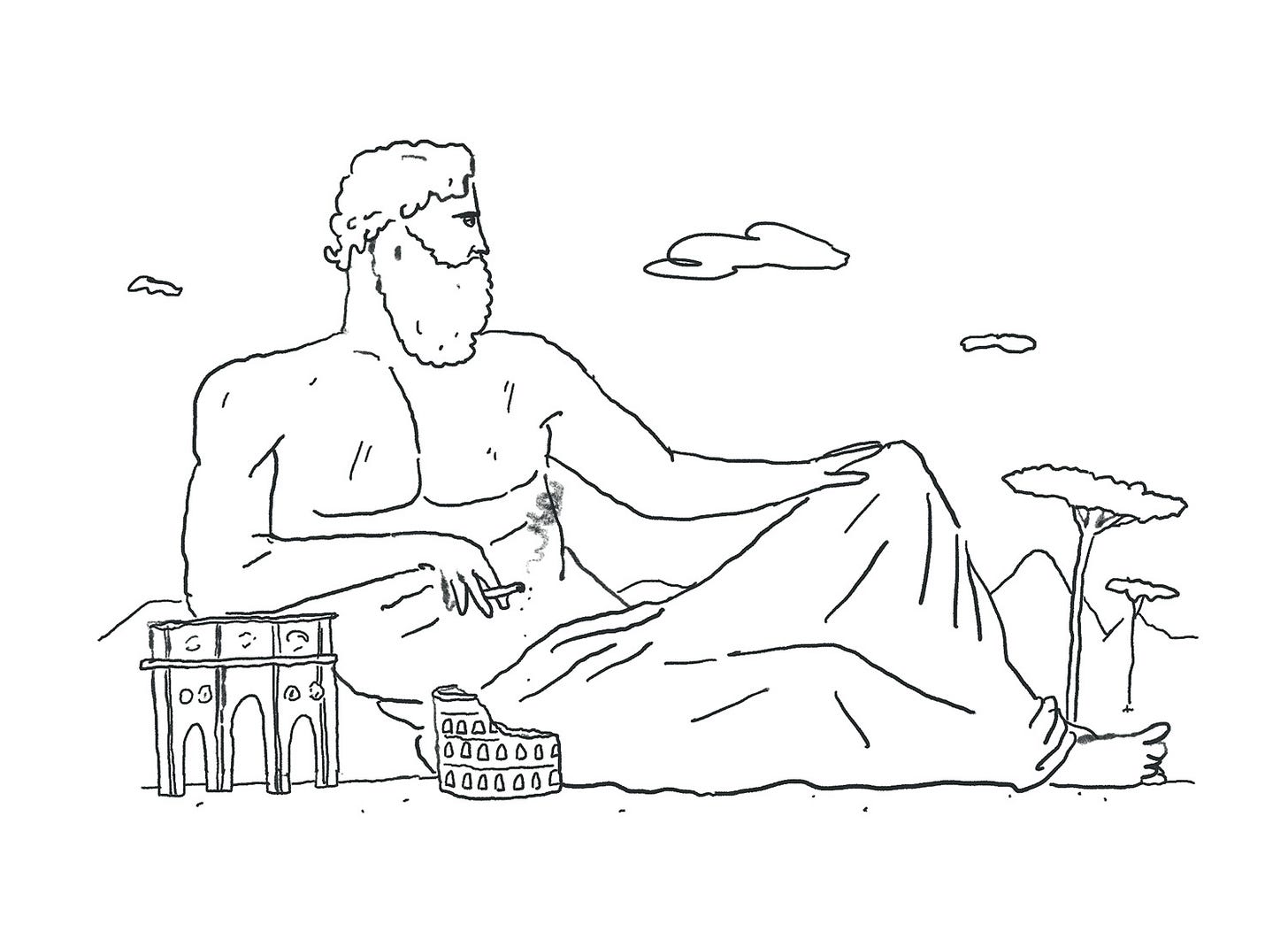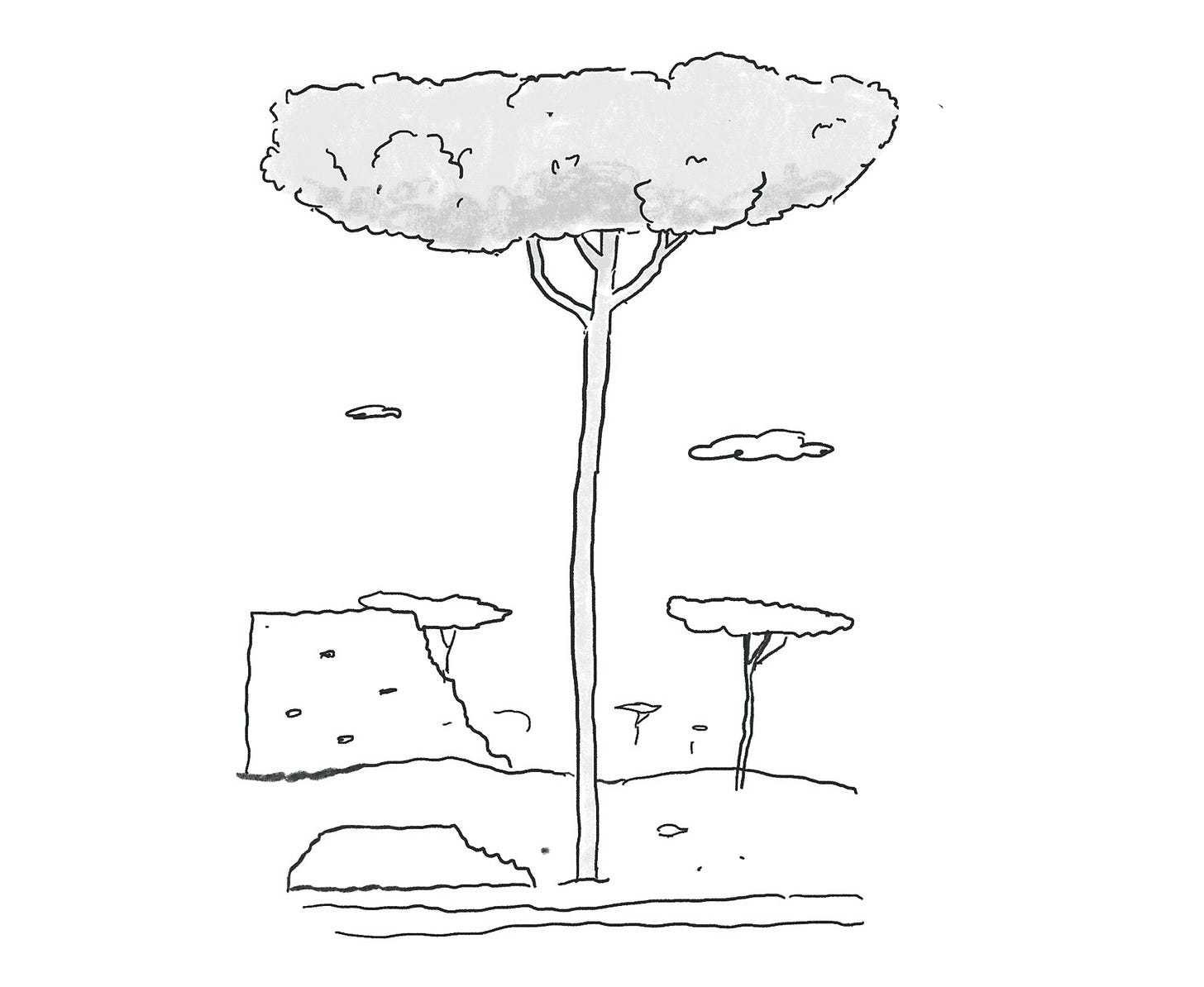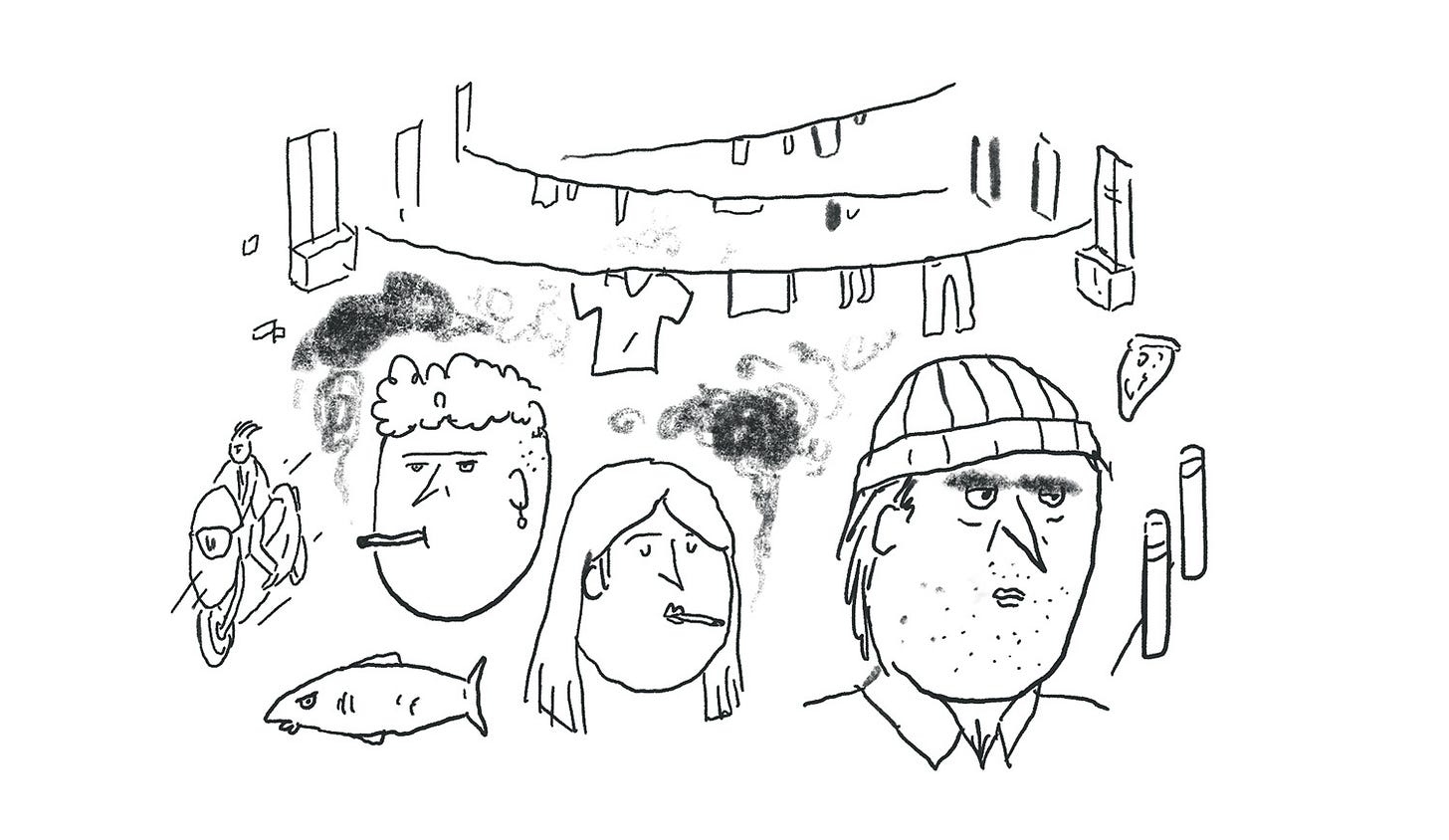This post is part 1 of 3 in a series about Italy, a country I recently explored with my wife. I didn’t expect to have anything to say about Italy, or have any ideas, but I found myself writing notes constantly throughout the trip. Has anyone already commented on Roman seagulls before? I hope not.
Aside from some of the fun, whimsical observations like the seabird situation in Rome, being in Italy also made me think about travel itself, what we learn about ourselves and even how it relates to life. This is a new type of post from what I normally make, longer as well, and so I really hope you enjoy it. Please let me know what you think via email or in the comments and thanks for reading.
When we travel, we often like to turn up to a city and admire all their big, old things. 'I cant believe how big and old this is' we say to ourselves and each other. We take photos - worse versions than what you can find with a quick online search - and then we go to the next thing.
Some cities have an embarrassment of riches when it comes to big, old things. None more so than Rome.
Rome has so many big, old things that you often stumble upon some just by accident. Crowds flock to the star attractions while magnificent historic buildings sit by garnering no attention. If Rome was a person, a close friend or relative might have a quiet word suggesting they have a hoarding problem. 'Maybe you could just offload a couple of these stately-looking buildings from the 17th century', they might say gently.
Roman pine trees are dotted around everywhere too. Giant prehistoric beauties that only add to the scale of Rome. Their long stretched trunks with all the action appearing at the very top, where suddenly the branches spread outwards. On top and way above the ground sits a squashed clump of greenery. They look how most of us might default to when given the task of drawing a tree from scratch, albeit slightly elongated. Suggesting maybe that it was the result of being engineered from a sketched brief, rather than natural evolution.
This does not diminish them in any way, in fact the Roman pine trees have a magnificent other-worldly presence in the city. Perhaps because they feature so heavily in art from previous eras, they provide the slightly disorientating effect that you may in fact be walking through a living painting. And at any second, you may be swooped by a flying baby or, Jesus with robes flapping in the wind, may cruise by on a cloud.
Even the seagulls seem to have been scaled up. As we had walked up the steps of Piazza Venezia and looked out at the city, a gull appeared on the ledge right next to us. The size of three seagulls merged into one, and pure white with a striking orange beak. Less needy than a regular seagull, it seemed aware of its imposing size and importance. It was a Roman seagull after all. I didn't have any chips to offer but had I been carrying some, I probably would have felt compelled to hand them over. Not how you might normally, which would be to placate the pathetic desperate behaviour of a regular seagull, but because of the sheer confidence of this Roman seagull.*
That's sort of what Rome does to you. Its massive and imposing presence makes you feel small.
* I imagine the chip would be enormous and carved from a single potato.
The amusing contrast to the scale of Rome are the tiny smart cars.
There may be big statues and big buildings, but parking space remains at a premium. Enormous statues of mighty Roman leaders watch on as toy cars cram into whatever space they can.
Every time I've returned to Europe years apart, the smart cars have gotten smaller. Inches shaved off here and there to the point where now some cars can actually drive front ways into a street parking spot. That is, the length of the car fitting into the width of a parking spot.
This is all leading, I believe, to the natural full circle return to the classic three wheeler ute. The charming original tiny Italian car with a single wheel on the front, two on the back and a back tray that looks like it might only have slightly more volume than a backpack.
The word you see most associated with Naples is gritty.
Gritty gets used in the way that 'fixer upper' is used to to describe a house that needs a lot of work. Or even how you might describe someone as 'interesting'. It only tells part of the story.
Naples is gritty. It's also tough. Really tough.
Naples is black leather jackets and blue jeans. A uniform of the youth of Italy and very much represented in Naples. The blue jeans pop in an otherwise sea of dark clothing. It's chaotic and loud. The streets and alleys of the old town are tight and you're packed in. Scooters and bikes roar past, the sounds bouncing off the walls around you. On one occasion, two young boys on a motocross bike burned past us, popping a wheelie followed by another bike equally out of place and it felt at times like things might totally break loose. It never did, but always bubbled away, threatening constantly.
School groups seemed to be everywhere. All wearing the dark uniform, the girls with heavy black makeup on, boys in black hoodies and joggers, with some kids using the opportunity to get a cigarette break in. I can only assume their parents had ticked the 'I allow my child to smoke a dart or two' box alongside the general excursion permission form. The occasional parent and teacher stood by chatting to the students, also smoking. It never seemed obvious while we were there what the students were learning. Maybe the lesson was tough love. How to carry yourself out on the streets via the school of hard knocks.
In Naples I got sick. I never get sick but it was as if the city was too much for my nervous system. My sensitive nature breaking under the weight of the full-bore assault on my senses.
At one point an old man, a seller at a fish stall, leant in and whispered something into my ear as I walked past. The deepest, graveliest voice I had ever heard, it sounded like it came from an underground sewer, or one one of the many secret caverns under Naples. A voice made of a thousand cigarettes. I have no idea what he said but maybe he whispered a curse into my ear.
I got sick not long after.
In all likelihood, the man was probably just telling me that he'd give me a good price on cod. Or sardines were on special. Something like that. But it didn't feel like it. Especially not in the way that it was delivered.
Naples obviously wasn't directly responsible for making me sick. I got sick because it was at the end of a long and exhausting build up prior to traveling. One in which my partner and I got married, packed up our life and moved overseas indefinitely. I was teetering on the edge of getting sick - Naples just gave me a little push.
I wasn't a fan of Naples but you can't say that wasn't heavily influenced by me getting sick, where I stayed in the city or whether I ate a dodgy ragu that messed up my stomach. Reviews are flawed like that. A bunch of subjective experiences boiled down to an average star rating which determines whether something is worthy or not. That's not to say reviews aren't extremely useful; they are. We can just become so single-minded, allowing them to rule our decisions that we miss out on the serendipity of taking a chance on something. Like the entire country of Italy for example (part 2 and 3 of my review coming up next).
And so Naples may in fact be right up your alley. A bustling alley filled with energy and excitement and kids that are too young to be riding motocross bikes. In which case you should ignore me and start booking your holiday there immediately.
The one thing I can't fault is the food though. And that's the reward if you can stick it out in Naples. A bit like reaching into an angry beehive, there is sweet, sweet honey on offer if you can brave the swarming bees.
Sweet honey in the form of pizza (of which Naples is the birthplace of), buffalo mozzarella, ragu, fried pasta and even fried pizza. This is not the gourmet dining scene in the north of Italy. This is tough street food. Do you need to eat this while jostling past people in an alleyway? Let me fry this into a ball or a pouch for you, says Naples.
My absolute favourite food though was the sfogliatella frolla. A pastry with serious weight to it, dense with as much deliciousness as possible. A sweet, hefty cobblestone of a thing filled with ricotta and orange peel and exactly my kind of treat.
Most people when describing their favourite kind of sweet treat will rank based on flavour. Or maybe a texture, something with a flaky pastry. Light and buttery.
I favour a heavy dessert, and the heavier the better. It suggests bang for buck. And if I’m choosing to indulge in a treat, I want as much rich dessert crammed into the available space. If possible, vacuum sealed as to remove all the extraneous air taking up valuable real estate that more dessert could be occupying. It's for this reason that I dismissed the sponge cake for many years. A cake known for being airy and light. The cake density equivalent of opening a bag of chips and finding 8 inside. I have since discovered how wrong I was, with my partner introducing me recently to a family recipe, a mindblowingly good strawberry cream sponge cake. I'm not sure how much air is inside humble pie but I certainly plan to look into it.
For all this, the sfogliatella was my kind of pastry. And I will always have soft spot for Naples. A soft spot that were I to stick around would likely become a tough callous. Naples and I weren't compatible, and that's ok.
It was time to leave.












Congratulations on your marriage Mike! This was a delightful read. I often take photos of seagulls. I like to juxtapose them against icons such as the Sydney Harbour Bridge. Perhaps you could try this with the giant ones? Look forward to the next instalment